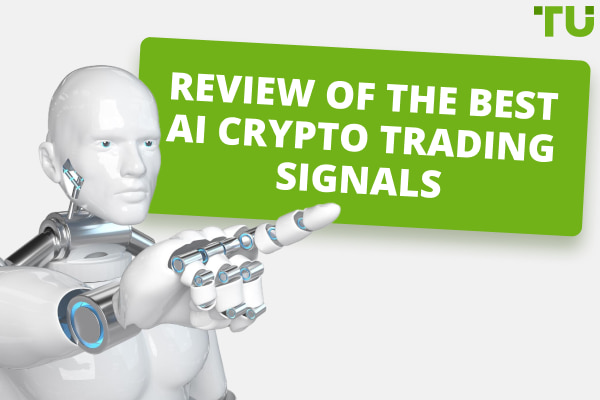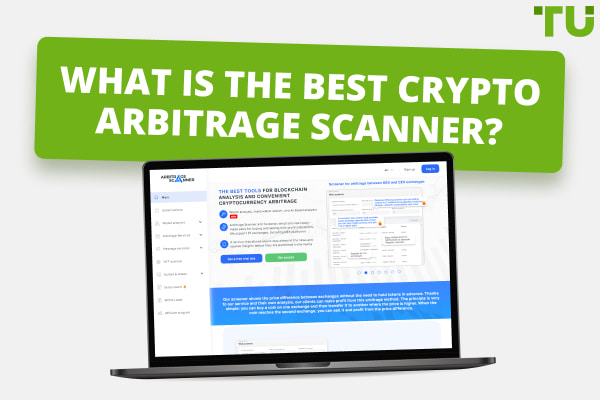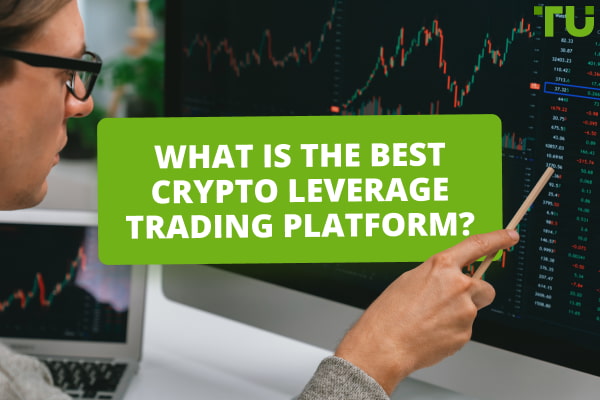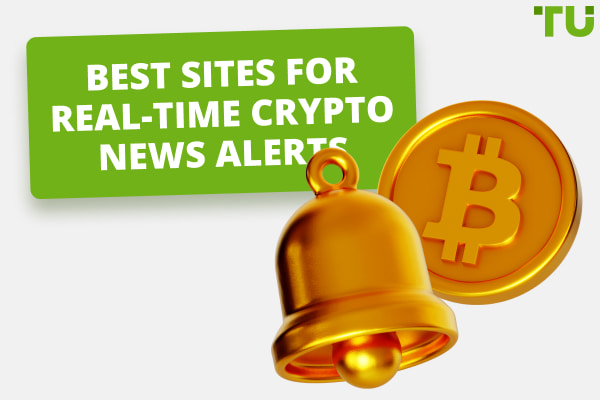Binance Fees Explained
Binance spot trading fee 0.1% for makers and takers. Binance futures taker fee starts at 0.04% but can get as low as 0.017
Binance has a very flexible fees structure. Binance US fees are notoriously low as well. In this guide, we’ll break down everything you need to know about Binance trading fees, deposit and withdrawal fees, and interest rates. We’ll also compare Binance with Coinbase and break down how you can keep your fees low with a few best practices.
Start trading cryptocurrencies right now with Binance!Basic Binance Fees Review
Binance is an excellent exchange, especially for cryptocurrency traders. Based in Hong Kong, this platform has a high daily turnover and decent liquidity. One would expect such a successful exchange to have pretty high fees, but that’s actually not the case. Binance is very affordable in terms of low fees.
Binance fees are among the lowest among large cryptocurrency exchanges. Also, there are several ways to reduce trading fees if you trade in particular ways and use certain best practices. The following commissions are the main fees that traders on the platform will need to worry about.
Type of fee |
Size |
Spot trading |
0.1% |
Instant buy and sell |
0.5% |
Fiat USD debit card deposit |
4.5% |
Crypto withdrawal |
Varies |
Binance Fees vs Coinbase Fees
Binance.US charges a flat 0.1% fee for spot trading, which is notably lower than a lot of other online U.S. exchanges. Specifically, Coinbase charges 0.5% for trading fees in addition to a flat fee of up to $2.99 per individual trade, depending on the overall trade amount. Binance is superior in this respect.
Binance vs. Coinbase Fees
| Type of Fee | Binance | Coinbase |
|---|---|---|
Spot trading |
0.1% |
0.5% plus up to $2.99 per trade |
Wire transfer |
$15 |
$10-25 |
Debit and credit purchases |
3-4.5% |
3.99% |
Binance Trading Fees Explained
In general, you will have to deal with a 0.1% spot trading fee and a 0.5% Instant Buy/Sell fee.
However, Binance’s trading fee structure is a little more complex than just that. By default, if you happen to hold BNB in your account, your overall trading fees will be deducted from your current BNB balance. Traders will receive a 25% discount (it is worth noting that this discount is subject to change) from their trading fee if they use BNB to pay for their trading fees.
With Binance, trading fees are determined by the trader’s overall trading volume over a thirty-day period in USD, as well as the trader’s daily BNB balance. Every day, user accounts are analyzed. The overall trading volume of each trader over a thirty-day period and the BNB balance status of each user is evaluated, and the trader’s tier will automatically change.
The following levels are offered by Binance:
-
Regular User:l < 1.000.000 USD or ≥ 0 BNB
-
VIP 1: ≥ 1.000.000 USD and ≥ 25 BNB
-
VIP 2: ≥ 5.000.000 USD and ≥ 100 BNB
-
VIP 3: ≥ 20.000.000 USD and ≥ 250 BNB
-
VIP 4: ≥ 100.000.000 USD and ≥ 500 BNB
-
VIP 5: ≥ 150.000.000 USD and ≥ 1000 BNB
-
VIP 6: ≥ 400.000.000 USD and ≥ 1750 BNB
-
VIP 7: ≥ 800.000.000 USD and ≥ 3000 BNB
-
VIP 8: ≥ 2.000.000.000 USD and ≥ 4500 BNB
-
VIP 9: ≥ 4.000.000.000 USD and ≥ 5500 BNB
Crypto Trading Fees
Binance is a very popular platform for trading cryptocurrencies. All crypto trades are subject to Binance’s 0.1% spot trading fee, but users can enjoy a 25% discount on their trading fee if they hold Binance’s cryptocurrency, Binance Coin. The minimum trade size for cryptocurrency trading is $10.
Futures Trading Fees
When compared to other crypto exchanges, Binance Futures has one of the notably lowest taker fee structures available. Currently, Binance’s taker fee starts at 0.04% but can get as low as 0.017%. The platform’s maker fees start at about 0.02% but can be free, depending on the user’s VIP level. In order to trade at the lowest possible rate with futures, you will need to climb the VIP ladder by holding the most USD or crypto in your wallet in addition to a specific BNB balance.
Binance P2P Trading Fees
Binance’s P2P trading fee scheme was recently changed for the benefit of users. Binance P2P offers no fees for takers who choose to buy and sell crypto by placing orders from advertisements on the Binance P2P platform while charging their own transaction fees to makers who post the advertisements. Fee rates can range from zero to 0.35%, depending on the specific fiat markets and currency pairs.
Binance Vs Coinbase Trading Fees
Binance and Coinbase are often compared with one another. However, their fee structures are quite different. Finance charges between 0.02% and 0.10% to purchase and trade on the platform, 3-4.5% for debit purchases, and a flat $15 fee for wire transfers. Coinbase charges a hefty 0.50% to trade on the platform. 3.99% for credit purchases, and wire transfer fees that range from $10 to $25.
Binance Non-Trading Fees
Binance charges a flat fee for withdrawals in order to cover the costs associated with moving crypto out of user accounts. However, the platform does not charge deposit fees for depositing crypto and US dollars.
Does Binance Charge Withdrawal Fee?
Yes, depending on what you are withdrawing. Withdrawal rates vary by blockchain network and often fluctuate without much notice because of things like network congestion. If you want to withdraw fiat currency like USD, you will need to pay 2.6BRL and only have the option of a bank transfer.
Does Binance have a conversion fee?
Binance Convert makes it very easy to convert one type of cryptocurrency into another type of cryptocurrency in seconds. The original maker and taker fees for Binance convert are 0.1%. Now, Binance offers the convert and OTC portal with zero fees, no slippage, and a wide range of cross pairs. The minimum trade amount is 10 USDT. There are no fees associated with depositing cryptocurrency assets like Bitcoin, Tether, and Ethereum. However, it is worth noting that there will be a spread charge that depends on the specific cryptocurrency you are converting to and from.
Other non-trading fees
Binance does charge a few other relatively low fees for specific things. All of these fees are dependant on the specific VIP tier that a user acquires. To start, the margin borrow interest rate ranges from 0.008000% to about 0.010000%. Cross collateral interest for cryptocurrencies like BTC averages about 0.2400%, but depends on the VIP level and the fluctuations of BTC. The platform’s liquidity spot fee ranges from 0.2000% to 0.0600%. The leverage offered is 1:10 and users do have to deposit a minimum of $1 on the platform, which isn’t too difficult to manage. According to Trader Union’s research, a standard account will be subject to a spread (or minimum value) of $6, which would be Binance’s commission rate. This is fairly reasonable.
Binance vs Coinbase – Non-trading Fees Comparison
When it comes to non-trading fees, Binance and Coinbase are quite similar, though Binance still comes in stronger than the latter. Binance users can enjoy no deposit fees, while Coinbase users will need to deal with a $10 fee for wire transfer deposits. Both Binance and Coinbase do not charge for general deposits or overall account fees. A bank transfer withdrawal will be subject to a $1.50 fee from Binance and a 1.49% fee from Coinbase. Just as well, debit and credit card withdrawals fall around 0% for Binance, while Coinbase charges 3.99%.
Binance Interest Rates
Binance offers a wide range of savings account based in different currencies. Unfortunately, many of their savings accounts are poorly rated by users online and do not have very strong annual percentage yields.
The following Binance savings accounts have a wide range of APY:
-
Binance Savings Bitcoin – 0.5% APY
-
Binance Savings Cardano – 0.48% APY
-
Binance Savings Algorand – 1% APY
-
Binance Savings Basic Attention Token – 0.44% APY
-
Binance Savings Avalance – 0.5% APY
-
Binance Savings Cosmos – 1.42% APY
-
Binance Savings Bancor Network Token – 0.5% APY
-
Binance Savings Aave – 1% APY
-
Binance Savings Ark – 1% APY
-
Binance Savings Curve DAO Token – 1% APY
-
Binance Savings Compound – 1% APY
-
Binance Savings Bitcoin Cash – 0.82% APY
-
Binance Savings Tether – 1.2% APY
-
Binance Savings Balancer – 4.2% APY
-
Binance Savings Ankr – 1% APY
-
Binance Savings BitTorrent – 1% APY
-
Binance Savings Aergo – 1% APY
Coinbase, alternatively, offers up to 5.0% interest as staking rewards for users who stake Tezos, Cosmos, or Ethereum.
How to Reduce Binance Trading Fees?
To put it simply, the most effective way you can reduce your trading fees is to invest regularly and boost your overall account value, in addition to investing in BNB. The more money you trade, the lower your trading fees will be. Binance regularly offers 20% fee discounts for new users, so do your research and find coupon codes that can provide this perk. There are also referral IDs from users and organizations around the world, which don’t take a lot of work to find.
Traders Union Rebate and Discount Programs
In addition to the above best practices, you can also cut down your Binance trading costs in crypto with Traders Union’s rebate service. Start by registering (for free!) on Traders Union’s website. Open an account on Binance using Traders Union’s unique affiliate link, and you’ll be able to save a significant amount of money on your commission costs through a rebate that is provided directly by Traders Union. Currently, the rebate amount is 80% of the opening commission. It’s very simple and easy to do, and it will automatically save you a lot of money.
FAQs
How can I used to Binance Referral Program?
This referral program is fantastic, and users can earn a 40% commission whenever a code user makes a trade on the platform. After logging in, navigate to your profile and then to the Referral section. Your referral ID and link will be generated and customized the way you’d like. Simply click [Generate your link] and you can share your links with other users easily. You can also use Traders Union’s unique referral link to access the platform’s rebate program and receive up to 80% of your initial commission account fee back.
What is Binance’s identity verification process like?
The process is relatively painless. Simply log into your account and navigate to User Center and then Identification. Select the Get Verified button. You’ll be presented with three different options: verified, verified plus, and enterprise verification. Each option has different deposit and withdrawal limits. Choose your option and select Start Now. From here, you will provide your country of residence and address, which will need to match your driver’s license or another form of ID exactly. You will also need to fill out some personal information and provide a selfie. From there, the verification process will be complete in one to seven business days, though the platform is usually quite fast.
How can I redeem futures bonus vouchers or cash vouchers with Binance?
Navigate to your account and choose Reward Center. The dashboard will then display all of your upgrades, vouchers, and funding rewards. Select “redeem now” on your voucher of choice. From here, you can navigate to your main homepage to see your new balance. There should be no issue when it comes to redeeming your voucher, but if your balance isn’t budging, we recommend getting in touch with Binance’s customer service team.
How do I buy crypto on Binance?
Very easily, actually. Create your account and wait to be verified. Once your account is live, navigate to the cryptocurrency you’d like to buy. When you click the Buy Now button, you’ll be presented with a few different options: Buy with a credit or debit card, your cash balance, or a P2P payment method. Follow the instructions and enter your card information if needed. We recommend depositing USD into your Binance wallet to purchase crypto, but any of the available options are good. Keep in mind that a cash-out fee might be charged by your bank in addition to order fees.
Glossary for novice traders
-
1
Trading
Trading involves the act of buying and selling financial assets like stocks, currencies, or commodities with the intention of profiting from market price fluctuations. Traders employ various strategies, analysis techniques, and risk management practices to make informed decisions and optimize their chances of success in the financial markets.
-
2
Cryptocurrency
Cryptocurrency is a type of digital or virtual currency that relies on cryptography for security. Unlike traditional currencies issued by governments (fiat currencies), cryptocurrencies operate on decentralized networks, typically based on blockchain technology.
-
3
Broker
A broker is a legal entity or individual that performs as an intermediary when making trades in the financial markets. Private investors cannot trade without a broker, since only brokers can execute trades on the exchanges.
-
4
Ethereum
Ethereum is a decentralized blockchain platform and cryptocurrency that was proposed by Vitalik Buterin in late 2013 and development began in early 2014. It was designed as a versatile platform for creating decentralized applications (DApps) and smart contracts.
-
5
Bitcoin
Bitcoin is a decentralized digital cryptocurrency that was created in 2009 by an anonymous individual or group using the pseudonym Satoshi Nakamoto. It operates on a technology called blockchain, which is a distributed ledger that records all transactions across a network of computers.
Team that worked on the article
Andrey Mastykin is an experienced author, editor, and content strategist who has been with Traders Union since 2020. As an editor, he is meticulous about fact-checking and ensuring the accuracy of all information published on the Traders Union platform. Andrey focuses on educating readers about the potential rewards and risks involved in trading financial markets.
He firmly believes that passive investing is a more suitable strategy for most individuals. Andrey's conservative approach and focus on risk management resonate with many readers, making him a trusted source of financial information.
Dr. BJ Johnson is a PhD in English Language and an editor with over 15 years of experience. He earned his degree in English Language in the U.S and the UK. In 2020, Dr. Johnson joined the Traders Union team. Since then, he has created over 100 exclusive articles and edited over 300 articles of other authors.
Mirjan Hipolito is a journalist and news editor at Traders Union. She is an expert crypto writer with five years of experience in the financial markets. Her specialties are daily market news, price predictions, and Initial Coin Offerings (ICO).











